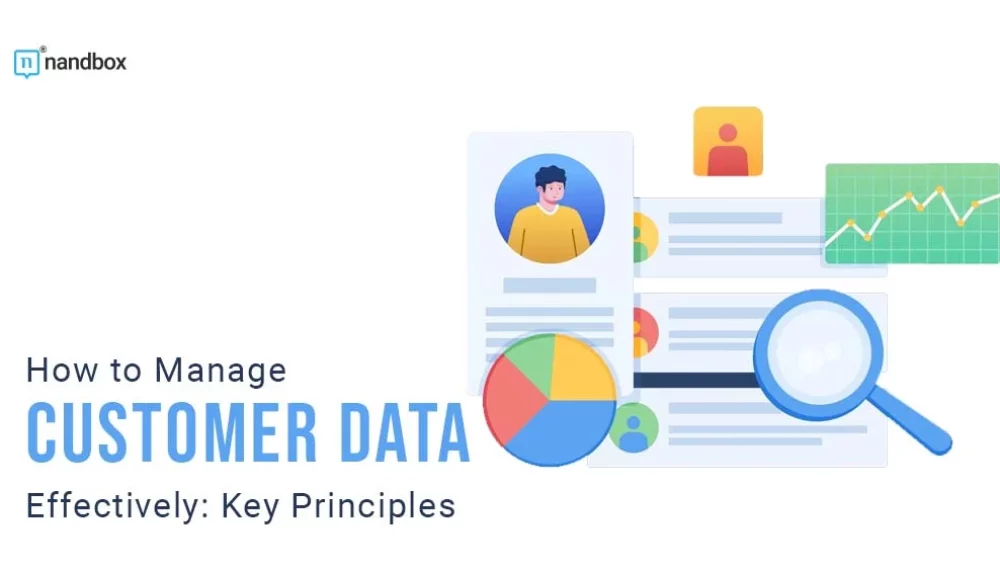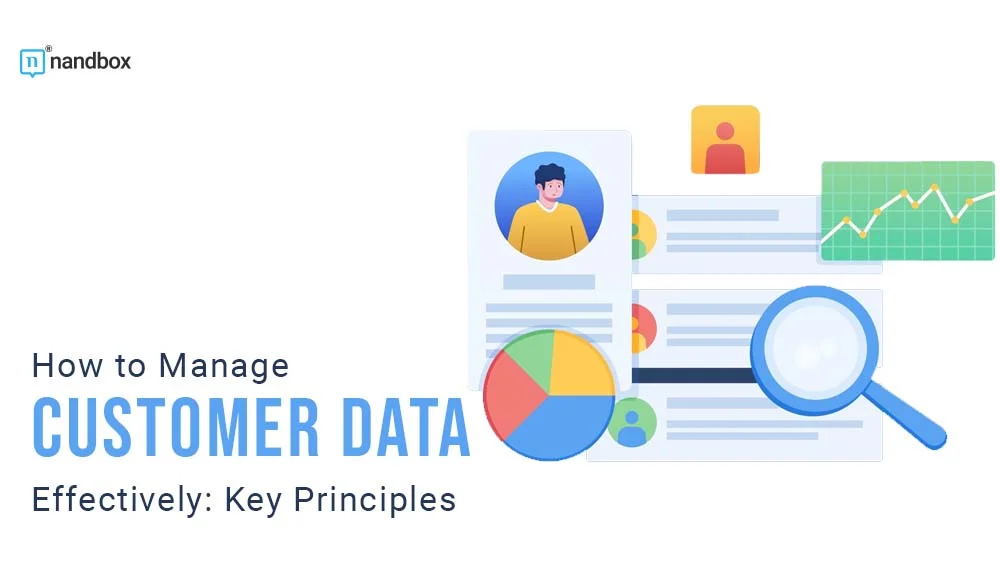Managing customer data effectively is crucial for business success. It ensures better customer relationships and informed decision-making.
In the digital age, businesses gather vast amounts of customer data. This data can drive growth if managed well. Poor data management, though, can lead to missed opportunities and legal issues. Understanding how to organize, secure, and analyze customer data is vital.
This blog will guide you through practical strategies for handling customer information. You’ll learn to improve data accuracy, enhance security, and use data insights effectively. Ready to transform your customer data management? Let’s dive in!
Importance Of Customer Data Management
The importance of customer data management cannot be overstated. Businesses today rely heavily on data to make informed decisions. Proper management of this data ensures accuracy, security, and effectiveness in operations. Without it, businesses might struggle to understand their customers and miss growth opportunities.
Why Customer Data Matters
Customer data offers insights into buying behaviors. It helps businesses understand what customers need. Knowing this helps in creating targeted marketing strategies. With accurate data, companies can improve customer experiences. This leads to higher satisfaction and loyalty.
Impact On Business Growth
Effective customer data management drives business growth. It helps in identifying trends and patterns. Businesses can then adapt to market demands. This agility gives them a competitive edge. Efficient data management also reduces errors and saves time. This improves overall productivity and profitability.
Collecting Customer Data
Collecting customer data is a vital part of any business strategy. It helps to understand customer behavior, preferences, and needs. With accurate data, businesses can create personalized experiences and improve customer satisfaction. This section will focus on effective methods of collecting customer data and ensuring its accuracy.
Methods Of Data Collection
There are several methods to collect customer data. Surveys are a popular choice. They provide direct feedback from customers. Online forms also work well. They capture essential details like email addresses and preferences. Social media is another valuable source. It offers insights into customer interests and interactions. Loyalty programs can also be useful. They track purchase history and reward customer loyalty.
Enhance your knowledge on CRM and Customer Support by exploring this related piece. Saas CRMs for Multilingual Customer Support: Boost Global Engagement
Ensuring Data Accuracy
Accurate data is crucial for effective decision-making. Regularly update your database. Remove outdated or incorrect information. Verify data at the point of entry. Use validation tools to check email addresses and phone numbers. Train your team on data entry best practices. Ensure they understand the importance of accuracy. Conduct periodic audits. Identify and correct any errors in your data.
Organizing Customer Data
Organizing customer data is essential for any business. It helps in understanding your customers better. With well-organized data, you can enhance customer experience. This leads to better customer retention and satisfaction. Let’s explore some methods to organize customer data effectively.
Data Segmentation Techniques
Segmentation is the first step in organizing data. It involves dividing customers into groups. You can base these groups on various criteria. For example, age, location, or buying behavior. This helps in targeting specific groups with tailored messages. Segmented data provides more personalized experiences.
Consider segmenting based on purchase history. Frequent buyers might appreciate loyalty programs. New customers might need introductory offers. Segmentation makes your marketing efforts more efficient. It also helps in identifying your most valuable customers.
Utilizing Crm Systems
CRM systems are powerful tools for managing customer data. They store all customer information in one place. This includes contact details, purchase history, and interactions. CRM systems help in keeping data organized and accessible.
With a CRM, you can track customer interactions easily. This provides insights into customer preferences and behavior. It also helps in automating tasks like sending follow-up emails. CRM systems improve customer relationship management. They make it easier to provide personalized service.

Credit: www.linkedin.com
Securing Customer Data
Securing customer data is crucial in today’s digital age. It is vital to protect sensitive information from unauthorized access. Effective security measures help maintain customer trust and comply with regulations. This section will explore key strategies to secure customer data.
Data Encryption Methods
Data encryption transforms readable data into an unreadable format. Only authorized parties can decrypt and access it. There are two primary types of data encryption:
- Symmetric encryption: Uses the same key for encryption and decryption. It is faster but requires secure key exchange.
- Asymmetric encryption: Uses a public key for encryption and a private key for decryption. It is more secure but slower.
Many businesses use a combination of both types for optimal security. Implementing encryption at multiple levels ensures comprehensive protection. Encrypt data at rest, in transit, and in use.
Explore the depths of CRM and Customer Support with this informative post. Why Does Zoho CRM Have List Descending: Top Benefits Explained
Compliance With Data Regulations
Compliance with data protection regulations safeguards customer data. It also prevents legal issues and fines. Here are some key regulations:
| Regulation | Region | Key Points |
|---|---|---|
| GDPR | European Union | Strict data protection and privacy rules |
| CCPA | California, USA | Protects consumer rights and privacy |
| PIPEDA | Canada | Regulates the collection and use of personal data |
To comply with these regulations, businesses should:
- Conduct regular data audits to identify sensitive information.
- Implement data access controls to limit who can view and edit data.
- Provide employee training on data protection best practices.
Staying updated with evolving regulations is essential. Regularly review and adjust data protection practices. This will ensure ongoing compliance and customer trust.
Analyzing Customer Data
Analyzing customer data is crucial for understanding your audience. It helps identify trends, preferences, and behaviors. By analyzing this data, businesses can make informed decisions. This leads to improved customer satisfaction and increased sales.
Key Metrics To Track
Tracking the right metrics is essential. Some key metrics include:
- Customer Lifetime Value (CLV): Measures the total worth of a customer to your business.
- Customer Acquisition Cost (CAC): The cost of acquiring a new customer.
- Churn Rate: The percentage of customers who stop using your product or service.
- Net Promoter Score (NPS): Gauges customer satisfaction and loyalty.
- Average Revenue Per User (ARPU): The average revenue generated per user.
Leveraging Analytics Tools
Using analytics tools simplifies data analysis. Here are some popular tools:
- Google Analytics: Tracks website traffic and user behavior.
- HubSpot: Offers customer relationship management (CRM) and marketing analytics.
- Mixpanel: Focuses on user engagement and product analytics.
- Tableau: Provides detailed data visualization and business intelligence.
- Salesforce: Combines CRM with powerful analytics capabilities.
Using these tools helps businesses understand customer interactions. This leads to more effective marketing strategies and better customer experiences.
Maintaining Data Quality
Maintaining data quality is crucial for any business. High-quality data ensures accurate insights, better decision-making, and enhanced customer experiences. Poor data quality can lead to errors, inefficiencies, and lost opportunities. This section will explore how to maintain data quality effectively.
Need more clarity on CRM and Customer Support? This post provides the answers you're seeking. Real-Time Metrics Tracking for E-Commerce CRM Users: Boost Sales Now
Regular Data Audits
Regular data audits help identify inconsistencies and inaccuracies in your data. These audits involve reviewing your data sets to ensure they are up-to-date and error-free.
Here are some steps to conduct a data audit:
- Define the scope of the audit.
- Collect and categorize data.
- Analyze data for accuracy and completeness.
- Document findings and take corrective actions.
Regular audits help in maintaining high data standards.
Data Cleansing Strategies
Data cleansing involves correcting or removing inaccurate records. This process improves data quality and reliability.
Effective data cleansing strategies include:
- Standardization: Ensure data is in a consistent format.
- Deduplication: Remove duplicate entries to avoid redundancies.
- Validation: Cross-check data with trusted sources for accuracy.
- Enrichment: Enhance data by adding missing information.
Implementing these strategies ensures your data remains clean and useful.
Utilizing Customer Data For Marketing
Managing customer data is vital for effective marketing. Proper use of data can help businesses create targeted campaigns, understand customer preferences, and increase engagement. Below, we explore how to utilize customer data for marketing with personalized campaigns and customer segmentation.
Personalized Marketing Campaigns
Personalized marketing campaigns are powerful. They make customers feel valued and understood. Using customer data, businesses can tailor messages to individual preferences. This leads to higher engagement and conversion rates.
Consider these steps for personalized campaigns:
- Collect Data: Gather information from various sources like purchase history, website visits, and social media interactions.
- Analyze Data: Use analytics tools to find patterns and trends.
- Create Segments: Group customers based on similar behaviors and preferences.
- Personalize Content: Develop customized messages and offers for each segment.
Customer Segmentation
Customer segmentation divides your audience into smaller groups. This helps to create targeted marketing strategies. Segmentation can be based on demographics, behavior, or purchase history.
Here are common types of customer segmentation:
| Segmentation Type | Description |
|---|---|
| Demographic | Age, gender, income, education level. |
| Behavioral | Purchase behavior, brand loyalty, product usage. |
| Geographic | Location, region, country. |
| Psychographic | Lifestyle, values, interests. |
By segmenting customers, businesses can create more relevant marketing messages. This increases the chances of conversion and customer loyalty.

Credit: nandbox.com
Future Trends In Customer Data Management
Managing customer data effectively is crucial for any business. With technology evolving, the way we handle this data is also changing. Future trends in customer data management focus on AI, machine learning, and predictive analytics. These trends will help businesses understand and serve their customers better.
Ai And Machine Learning
AI and machine learning are transforming customer data management. They automate data collection and analysis. This process saves time and reduces human error. AI tools can identify patterns in customer behavior. These patterns help businesses predict future actions. Machine learning algorithms improve over time. They get better at predicting customer needs. This continuous improvement means more accurate insights. Businesses can then personalize their services. This leads to higher customer satisfaction.
Predictive Analytics
Predictive analytics is another trend reshaping customer data management. It uses historical data to forecast future events. Businesses can identify trends and customer preferences. They can anticipate what customers will want next. This helps in making informed decisions. It also improves marketing strategies. Predictive analytics can reduce churn rates. Businesses can address issues before they escalate. This proactive approach builds stronger customer relationships. It also boosts customer retention rates.

Credit: www.zendesk.com
Frequently Asked Questions
What Is Customer Data Management?
Customer data management involves collecting, storing, and analyzing customer information. It helps businesses understand their customers better and improve services.
Why Is Managing Customer Data Important?
Effective customer data management enhances customer experience, boosts loyalty, and drives business growth. It ensures informed decision-making.
How Can Businesses Secure Customer Data?
Businesses can secure customer data through encryption, access controls, and regular security audits. Training employees on data security is crucial.
What Tools Help In Managing Customer Data?
Tools like CRM software, data management platforms, and analytics tools aid in efficient customer data management. They streamline processes.
Conclusion
Effectively managing customer data can boost your business success. Follow best practices to keep data secure and organized. Use simple tools for data collection and storage. Regularly review and update your processes. Clear communication with your team ensures everyone knows their role.
Happy customers lead to business growth. Start today and see the difference in your customer relationships. Proper data management helps you serve your customers better.











